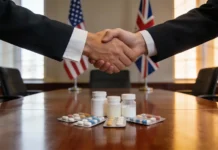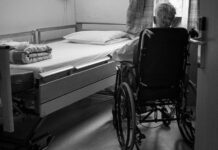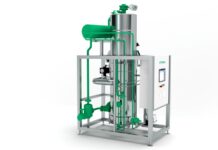When someone experiences or witnesses a traumatic event, it can have lasting effects. People with post-traumatic stress disorder (PTSD) will often relive the event or aspects of it long after it has passed, experiencing intense PTSD attack symptoms both emotionally and physically. Being able to recognize the signs of an oncoming PTSD attack is crucial. Awareness brings the power to better cope and choose healthier responses for resilience.
Understanding PTSD attack signs means acknowledging the brain and body’s normal reactions to abnormal events. With compassion for oneself and education on symptoms, people with PTSD can develop skills over time to lessen its power. While everyone’s PTSD manifests differently, some common physical and emotional symptoms offer clues a PTSD attack is brewing or happening.
What Is PTSD Attack?
A PTSD attack, also known as a PTSD flare-up or relapse, is the sudden intensification of post-traumatic stress disorder symptoms that had previously been managed well or were lying dormant. It involves the short-term re-experiencing or recurrence of many psychological and physiological symptoms related to previous trauma exposure after a period of stability.
Physical Symptoms of an Oncoming PTSD Attack
PTSD stems from the activation of primal regions of the brain specialized for survival like the hippocampus, amygdala, and prefrontal cortex. These central structures generate hardwired neurological and chemical reactions for emergency mobilization in life-threatening situations.
When trauma imprints, the nervous system essentially gets “stuck” in overdrive, firing into a fight, flight, or freeze mode long after the real danger passes. A PTSD attack triggers many of these biological reactions making the event feel like it’s reoccurring all over again in the present time.
Recognizing the bodily sensations of a flaring response is the first step in managing PTSD symptoms effectively.
Physical PTSD attack cues include:
Headaches
Tension headaches or migraines are very common during periods of high anxiety and stress. These are often caused by tense muscles in the neck and jaw.
Muscle tension
PTSD sufferers often carry a lot of tension in their bodies, especially in the neck, shoulders, and back. During a PTSD episode, this muscle tension worsens and causes painful cramping or spasms.
Chest pain
The feeling of a racing, pounding heart is very common during PTSD attacks. However, sometimes this heart palpitation can make people think they are having a heart attack due to chest pressure or pain.
Stomach issues
Stress significantly disrupts normal digestive function, so symptoms like nausea, vomiting, diarrhea, constipation, loss of appetite, bloating, and stomach pain can all happen.
Hyperventilation
Fast, shallow breathing or a feeling of inability to catch one’s breath are very common PTSD symptoms. The chest may feel tight and panicky breathing occurs.
Fatigue
Emotional and physical exhaustion often follows in the aftermath of an intense PTSD flare-up due to the flooding of stress hormones like cortisol and adrenaline.
Dizziness
During acute anxiety and panic, changes in breathing and heart rate can make someone feel lightheaded or dizzy due to a lack of sufficient oxygen circulating.
Sweating or chills
Surges of stress hormones often generate a “fight or flight” feverish response with sweating, followed by chills or feeling extremely cold once the anxiety surge passes.
The wide array of physical PTSD signs reflects the systemic stress response extending through multiple areas when trauma gets re-stimulated. Paying attention to bodily cues aids in faster intervention to mitigate attack escalation.
Emotional Symptoms of an Oncoming PTSD Attack
In addition to physical discomforts, clear behavioral and emotional signs reliably indicate PTSD symptom flare-ups. Recognizing the earliest warnings creates opportunities to use coping strategies to prevent a full-blown relapse.
Common emotional PTSD attack cues include:
Acute anxiety or panic attacks
A feeling of sudden, gripping fear or terror is perhaps one of the tell-tale hallmarks of a PTSD attack. This often occurs with heart palpitations, rapid breathing, and sweating.
Flashbacks and intrusive memories
Distressing images from a traumatic event may flood back, making someone feel as though they are reliving the experience. This causes extreme emotional anguish.
Irritability and anger
Feeling agitated, on edge, volatile, short-tempered, or enraged are common PTSD signs. Anger issues often ramp up dramatically during an attack.
Depression and hopelessness
Mood frequently plummets immediately during or following a PTSD flare. Intense sadness, frequent crying, feelings of despair, and wanting to isolate occur.
Numbing and dissociation
Sometimes people may emotionally shut down where they feel totally numb, empty, or disconnected from the world around them. This helps create distance from the emotional agony.
Hypervigilance
PTSD often correlates with feeling constantly on-guard watching for looming threats so anxiety remains very elevated even without acute attacks happening.
Loss of control
The intensity of physical and emotional sensations often generates a terrifying sense of being out of control or feeling like one is “going crazy” during PTSD episodes.
Nightmares and insomnia
Sleep often worsens substantially before, during, or after PTSD flare-ups. Frequent awakenings and nightmares about trauma are very common.
While physical and emotional PTSD attack symptoms largely feel involuntary and intense when they arrive, certain triggers frequently set them off. Pinpointing individual PTSD attack cues offers the opportunity to anticipate and circumvent difficulty through timed coping interventions.
What to Do When Experiencing a PTSD Attack
When PTSD attack symptoms get triggered, quick shifts can reduce the intensity and duration of relapse. Practicing responsive strategies before, during, and after post-traumatic reactions builds critical coping capacity giving back a sense of control.
Helpful skills to manage in-the-moment PTSD attacks include:
Prepare Before Symptoms Start
- Identify your common PTSD attack triggers and cues through journaling. Find patterns about when they happen, potential causes, and productive responses. Knowledge is power!
- Build a coping toolkit of permissible self-soothing items like headphones, sunglasses, comfort objects, inspirational notes, favorite snacks, or distractions.
- Have crisis support contacts programmed ahead when intensity feels unmanageable alone like counselors, understanding friends, or medical help.
- Stock up on prescription medications needed if recommended by your doctor so they’re available during episodes.
Soothe Yourself During PTSD Attack Flare-Ups
- Use grounding coping skills to stay centered like 5-4-3-2-1 noticing sensory details or 55 grounding questions to shift thinking.
- Play calming music, inspiring podcasts, or audiobooks through headphones to override negative audio cues.
- Engage motivating smells like lemon balm or lavender essential oils.
- Carry personal items providing comfort like inspirational quotes, family photos, a hot tea thermos, or a weighted blanket.
- Limit social interactions and additional stimuli Inputs until it pass. Protect your energy.
Recover Gently Afterward
- Talk through your experience with safe support people to process emotions and triggers.
- Write out lingering thoughts, memories, or reactions in a journal to continue expression.
- Make a soothing self-care activity list: you can check items off from like taking a bath, snuggling a pet, getting a massage, taking a power nap, or making comfort food.
To Sum Up
Remind yourself healing happens gradually even when setbacks occur. Give lots of grace.
While PTSD is a complicated condition, paying attention to warning signs allows for earlier intervention, relapse prevention, and quicker recovery. Attuning to the common physical and emotional symptoms means you can activate coping mechanisms faster lessening the PTSD attack impact. Establish day-to-day wellness routines that support mental health while building a first aid kit for difficult times.
The goal of PTSD attack management is not to eliminate symptoms completely – an impossible task. Instead, each small step in creating awareness, community support, therapeutic processing, and embodied soothing self-care reinforces resilience. Have compassion for yourself and others suffering from post-traumatic stress. Our shared humanity bonds us when we recognize no one is alone in the journey toward healing.




















